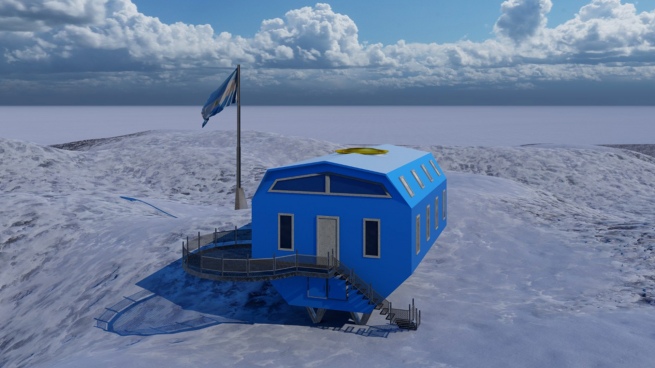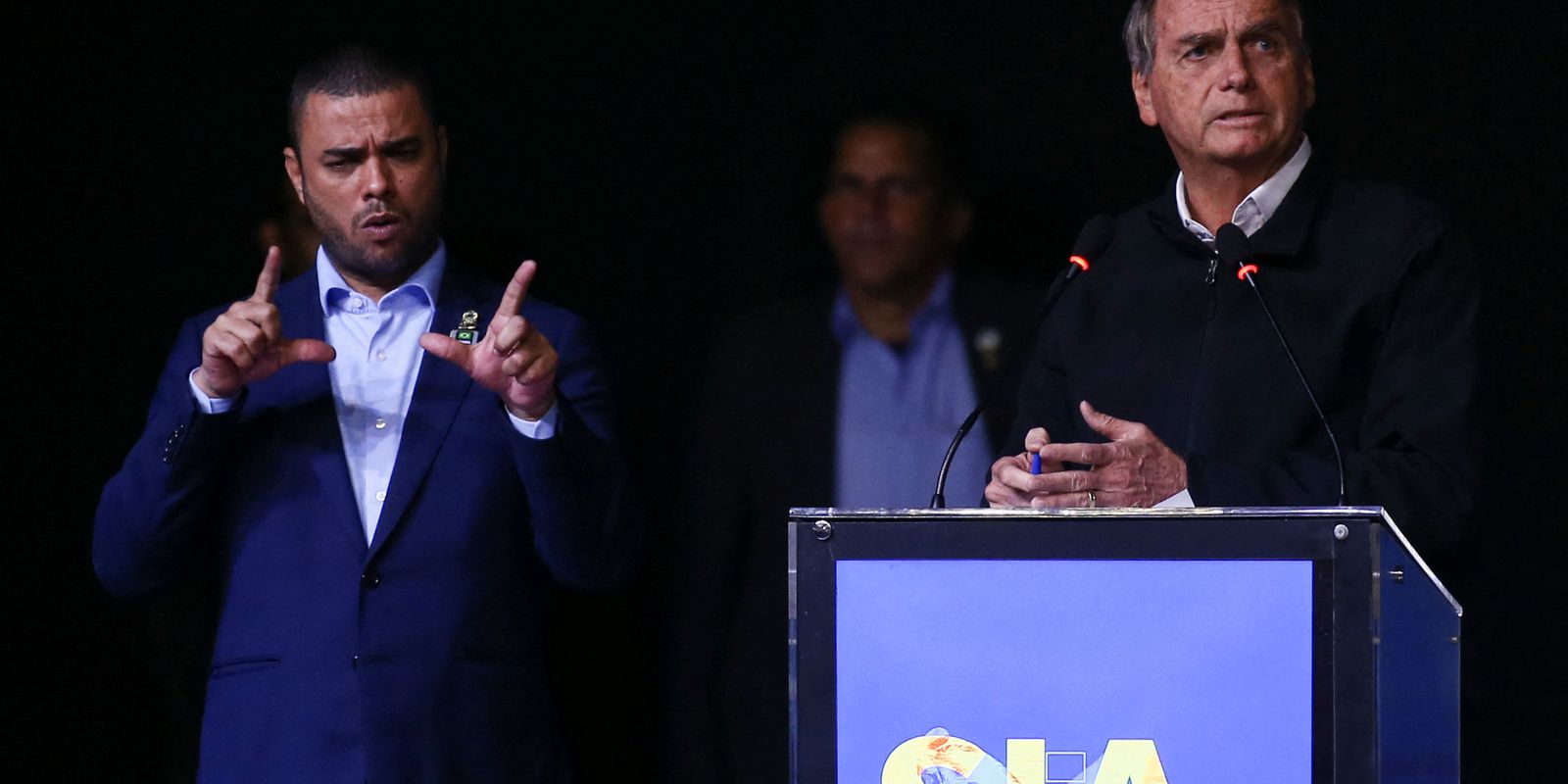Three new multidisciplinary laboratories for the Esperanza, San Martín and Orcadas bases, together with new shelters on the Vega and Cerro Nevado islands near the Marambio Base, will be built during 2023 by Argentina in its Antarctic territory, based on an agreement signed this Tuesday by the Ministers of Science, Daniel Filmus, of Defense, Jorge Taiana, and of Foreign Relations, Santiago Cafiero.
The initiative was presented at the headquarters of the Ministry of Defense, where officials confirmed that the buildings were designed by engineers from the Argentine Army that they hope to complete their construction during the next summer Antarctic campaign in 2023 and that the Ministry of Science will finance them with 200 million pesos within the framework of the Federal Program to Build Science.
These three new laboratories and the two shelters are part of the first stage of the project “Multidisciplinary Antarctic Laboratories”promoted by the Ministry of Science, the Argentine Antarctic Institute (IAA), the Joint Antarctic Command (Cocoantar) and the General Manuel N. Savio Foundation.
New laboratories in Antarctica ??. The Ministry @ciencia_ar will invest $200 million.
We articulate with the Minister @JorgeTaiana and the chancellor @SantiagoCafiero the expansion of the research capabilities of the Antarctic Institute. we build #Sovereignty#ScienceArgentina pic.twitter.com/1dttzWkrj0
— Daniel Filmus (@FilmusDaniel) August 9, 2022
The buildings were designed in compliance with all the environmental protection measures established by the international mechanisms that have responsibility for Antarctica, and designed to be built in a few days, to take advantage of the summer months.
These three 40-square-meter laboratories and the two 20-square-meter shelters represent a great advance in Argentina’s scientific capabilities, since they allow the improvement of scientific-technological work in Argentine Antarctic bases that, until now, concentrated a large part of their scientific activity in the summer months, it was officially reported.
Defense Minister, Jorge Taianaaffirmed that “these three new laboratories in three permanent bases are one more example of the effort that the government makes to sustain our sovereign gaze towards the South Atlantic, towards our islands and towards Antarctica”.
These three 40-square-meter laboratories and the two 20-square-meter shelters represent a great advance in Argentina’s scientific capabilities.
“With the Foreign Ministry we are working hard on the recovery of the Petrel base, which is a process that we began last summer and we will continue on this path of strengthening and coordinating efforts,” he added.
The head of the Defense portfolio completed: “Today in this meeting we are the three ministries, the scientific organizations and the Armed Forces; it is an example of how public policies can be coordinated, just as we did last year to equip the new laboratories of the icebreaker ‘Almirante Irízar'”, Taiana completed.
For his part, the Foreign Minister, Santiago Cafierostressed that “this initiative is a demonstration of the potential of coordinated work between ministries, and also a recognition of the well-earned international prestige of the Argentine Antarctic Institute, an organization that is a model at the international level and that from this project gains tools to increase its scientific production”.
“This initiative also underpins our presence in the South Atlantic and Antarctica, where science is a tool at the service of sovereignty,” he added.
“Strengthening the scientific task in Antarctica is vital for Argentina given the need to have its own information to hold discussions and be seated with its own voice at all international tables where issues as strategic as the advancement of climate change are debated,” Cafiero completed.
In his turn, the Minister of Science, Daniel Filmusmaintained that “this project is part of a comprehensive policy towards the construction of sovereignty in the South Atlantic, we are proud to have a president like Alberto Fernández who raises Antarctica as a structural issue and a government in which a lot of work was done and we hope to advance even further with milestones such as the sanction in Congress of the new official map that incorporates the continental shelf”.
He argued that “Argentina is the country with the longest tradition in Antarctica and the country with the largest number of bases deployed on that continent; although these bases in many cases do not have the most current infrastructures, these laboratories come to account for that need,” he said. .
“This project is part of a comprehensive policy towards the construction of sovereignty in the South Atlantic”Daniel Filmus
In that sense, he said that “for scientific tasks today the Carlini Base has facilities that allow them to be carried out throughout the year, and with these new facilities in three other bases we are going to multiply our capacity to produce Science in Antarctica.”
Filmus advanced that, in this line, In September, the Interinstitutional Council for Science and Technology (CiCyT) will hold its next session in Antarctica.
The head of the Joint Antarctic Command of the Armed Forces, Brigadier General Edgar Calandín, also alluded to the project, stating that “it is a source of pride that the design of the new buildings has been carried out by our engineers.”
It is estimated that their construction could be carried out between the months of January and March 2023 according to the progress of the logistics operations of the next summer Antarctic campaign.
In addition, the Director of the IAA, Walter Mac Cormack, pointed out that “this initiative responds to an old desire of those of us who carry out scientific tasks in Antarctica and strengthens the position of international recognition that Argentine science has.”
“I have many years of research and work, and I do not remember an opportunity like this, it is a very complex job that none of the organizations present could do on their own” he considered.
It is estimated that their construction could be carried out between the months of January and March 2023.
This first stage of the project will increase the quantity and quality of the scientific activities to be carried out in these bases, taking advantage of the differential potential of each of the Antarctic bases arising from their geographical location and their own local and environmental conditions.
In a second agreement to be signed in the future, the execution of the second stage of the projectwhich will include equipping the laboratories and scientific shelters at Petrel Base and the Millerand Island, Margarita Bay and Dusse Bay Shelters, over a 24-month period, with projected completion in 2024, and will also include financing of $3,360,000. by the scientific portfolio.
The aim of the initiative is to contribute to promote scientific research in the regionmaking Argentine science more competitive at a national and international level in the context of the Antarctic Treaty System.
The Federal Program Building Science seeks to contribute to the strengthening of the institutional capacities of scientific research, development and technological innovation of the institutions of the National System of Science, Technology and Innovation (SNCTI) through the strengthening of their building infrastructures, considering a federal perspective.
In addition to the officials mentioned, the Secretary of Malvinas, Antarctica and the South Atlantic, Guillermo Carmona, participated in the meeting; the director of the DNA, Patricia Ortúzar; the Secretary of Science, Technology and Production for Defense, Daniela Castro; Secretary of International Defense Affairs, Francisco Cafiero, the Chief of the Joint Chiefs of Staff of the Armed Forces, Lieutenant General Juan Martin Paleo, and the commander of the Cocoantar, Brigadier General Edgar Calandín, among other civil and military authorities.










